Roof ventilation allows air to flow through the attic space, escaping through the roof vents. It’s essential to note that there are seven distinct types of roof vents.

| Roof Vent Type | Description |
|---|---|
| Turbine Vents | Popularly known as "whirly birds," these vents recirculate air in the attic 10 to 12 times per hour. |
| Power Vents | Circular vents near the ridge cap powered by electricity, effectively removing hot air and humidity. |
| Solar Powered Vents | Operate on solar energy, providing eco-friendly ventilation; may not run on cloudy days due to battery charging. |
| Roof Ridge Vents with Baffle | Ridge vents cut into the roof with plastic flaps (baffle) requiring mechanical fans for optimal performance. |
| Ridge Vents Without a Baffle | Cut into the roof decking along the ridge without protruding, but may allow birds and outdoor elements into the attic. |
| Static Vents | Also known as box vents or turtle vents, these passive vents use convection to pull hot air out of the attic. |
| Gable End Vents | Installed on the sides of the home, allowing attic air to flow out when the wind blows, enhancing overall ventilation. |
You can break roofing ventilation down into two separate types: active and passive.
Active ventilation includes fans pushing air through your attic or crawl space. If you have active ventilation, the ridge vent on your home has plastic flaps that allow air to pass through.
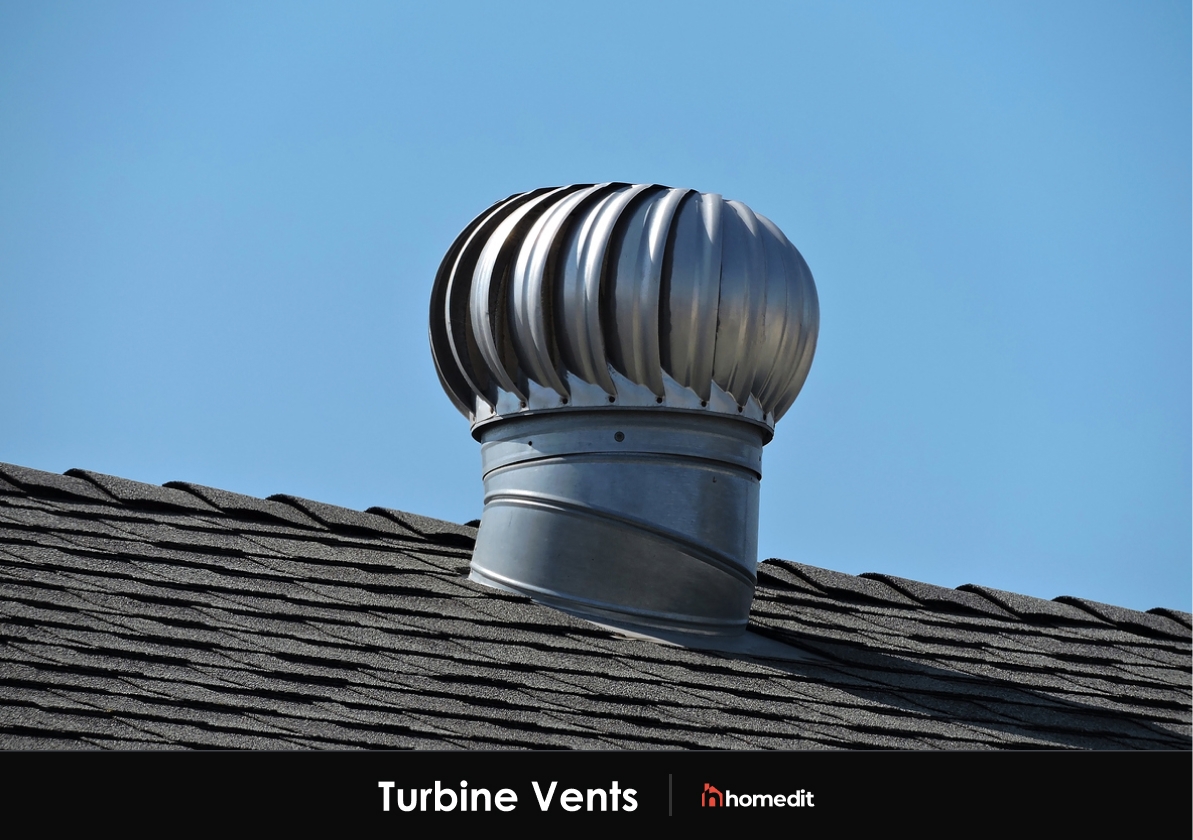
Turbine vents, also called “whirly birds,” are some of the most popular roof vents. These vents allow the air in your attic to recirculate 10 to 12 times per hour.
There is a common misconception about turbine vents. Many people believe that their makeup allows birds, debris, rain, and snow to enter your home. This only happens if the turbine vent suffers damage, at which point you need to have your vent replaced.
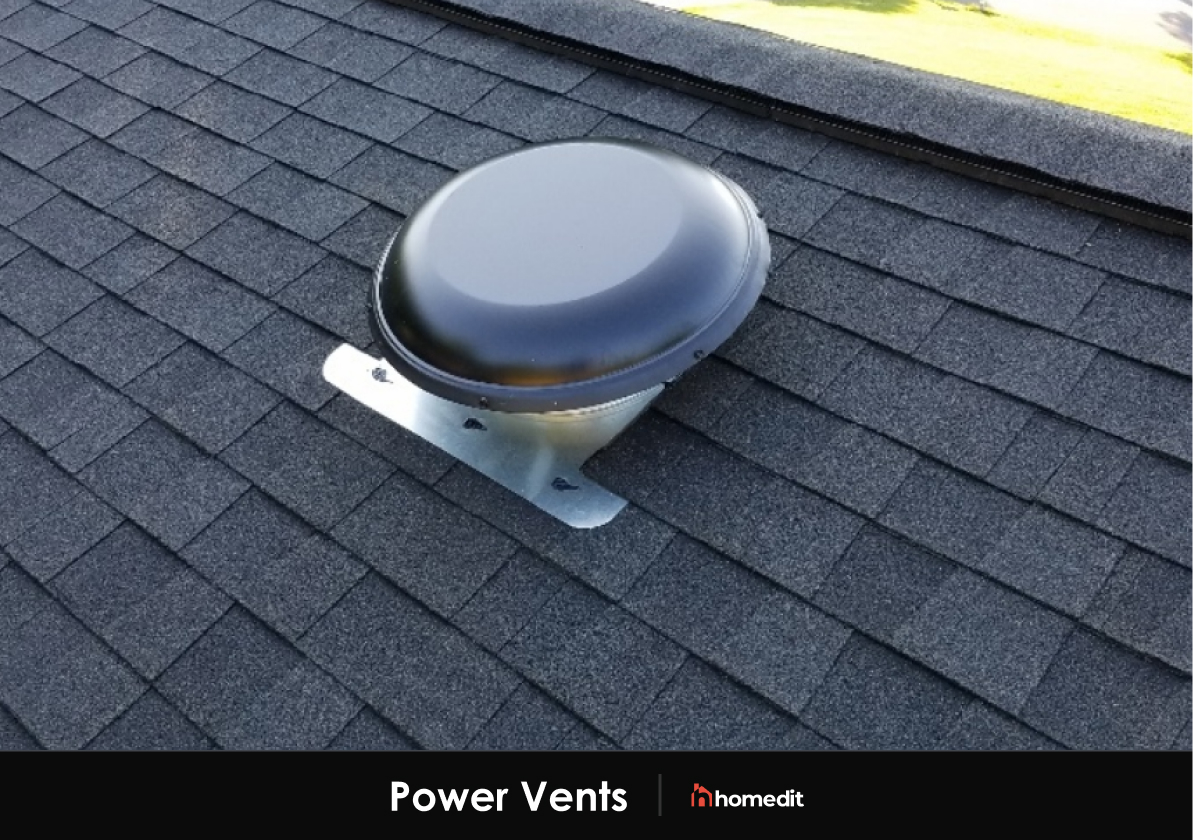
Power vents are circular vents you usually see near the ridge cap on a roof. These vents rely on electricity to pull hot air out of your attic, dispersing it into the air. These vents not only keep your attic cool but also help reduce the risk of humidity damaging the lumber and drywall used in your attic.
During wintertime, you should use your power vent with a humidistat. This helps maintain optimal humidity levels in your attic.
The only downside of power vents is that the engines are prone to fail because they run so much. If you opt for power vents, you should plan on replacing the motors every few years.
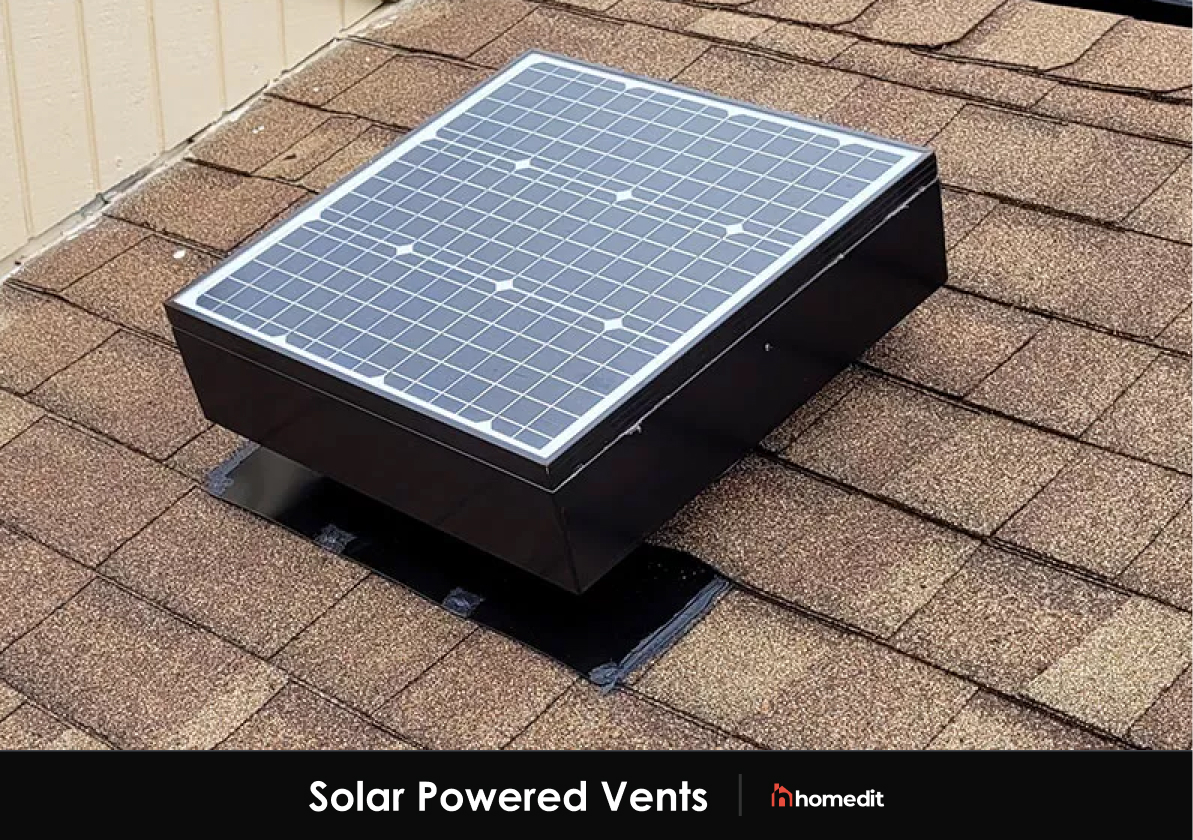
Converting to solar power is a popular choice among homeowners, so it makes sense that roofing vent manufacturers offer solar-powered vents. These vents rely on energy provided by the sun to operate. Unfortunately, the vents do not run while the battery is charging, which may lead to difficulties during cloudy days.
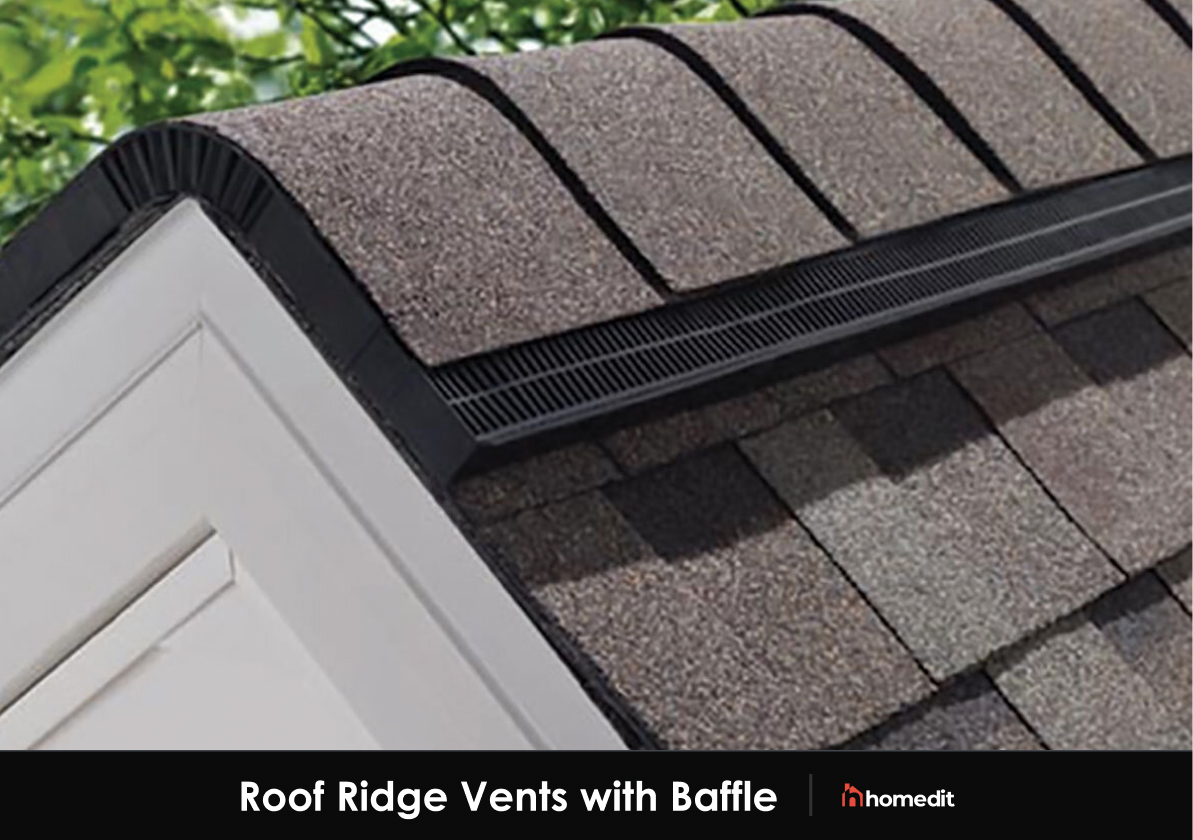
Ridge vents that have baffle (plastic flaps) are a popular choice among homeowners. Roofing contractors cut these vents into the roof so they do not stick up, detracting from the beauty of your roof. They require you to install some mechanical fans in your attic, though.
Passive ventilation does not require any fans. Letting air flow through the space naturally, passive ventilation does not require a ridge vent to have plastic flaps, also called baffles.
Ridge vents without a baffle are a popular choice, primarily because they do not stick out of your roof. Instead, contractors cut these vents into the roof decking along your roof’s ridge. Unlike their active counterparts, these vents do not have a baffle.
The biggest issue associated with ridge vents that have no baffle is that birds and other outdoor elements can get into your attic.
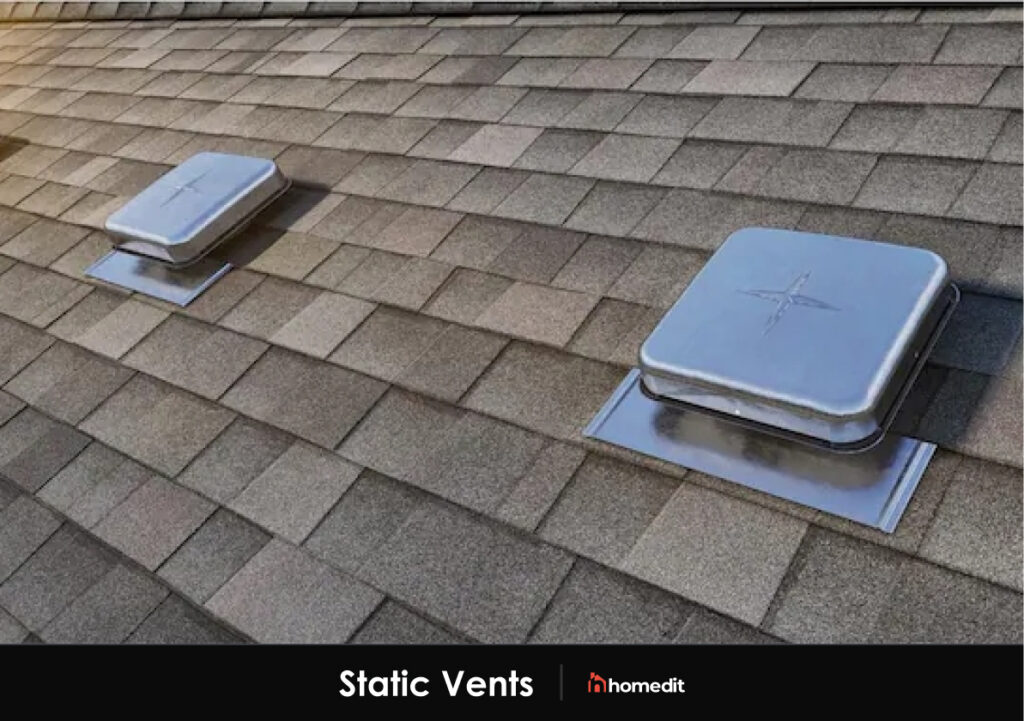
If you see a roof that has small boxes on it, those are static vents. Static vents rely on convection to pull hot air out of your attic before pushing it out of your vent. Also referred to as box vents or turtle vents, static vents are the most common type of passive roof vents.
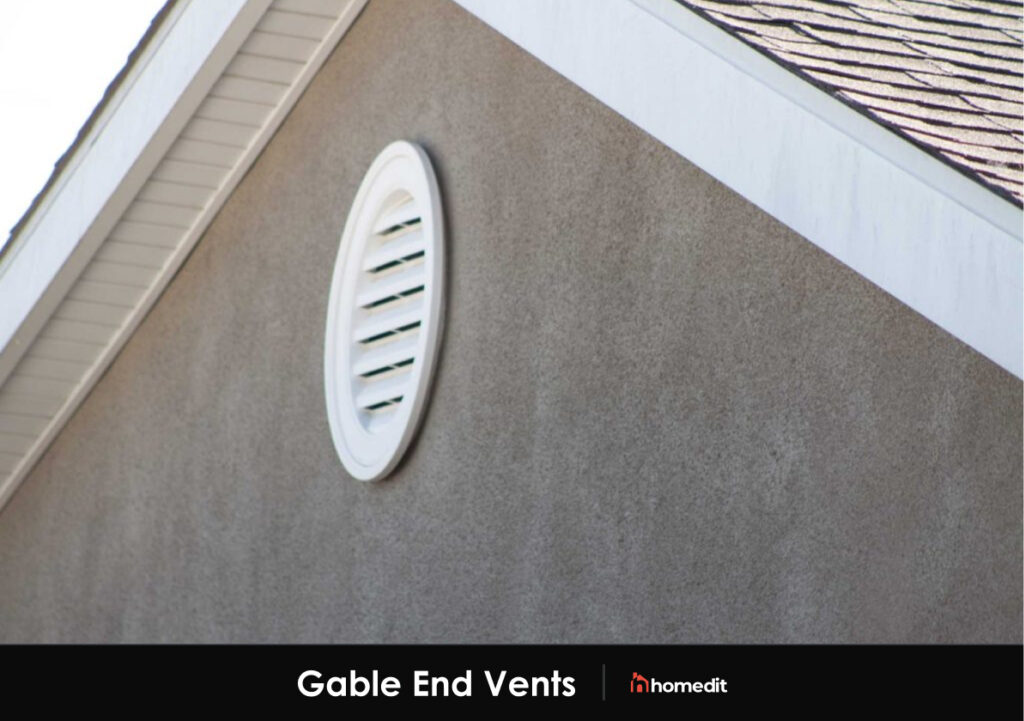
Finally, gable end vents provide ventilation to your roof without actually being in your roof. Instead, a roofing contractor can cut these vents into the side of your home, just below the peak. When the wind blows outside, these vents allow the air in your attic to flow through the vents and out the sides of your homes.
Having a roof ventilation system not only makes your attic more comfortable but it also plays an important part in expanding the lifespan of your roof. You should work with your roofing contractor to choose the best type of roof vent for your home.

Gisele Bundchen's contemporary twist on this emerging design trend is the talking point of her kitchen
Zendaya taps into the subtle power of this accessory to ensure her neutral living room is never boring
Amazon has become a go-to for chic home decor – here’s what we’re shopping from the 2024 Spring Sale
This designer's 'every seat needs a surface' rule has changed my living room layout forever – here's what I mean
5 designer Amazon storefronts that make shopping for stylish homeware so much easier
Joanna Gaines' 'mesmerizing' garden is the perfect example of how to grow cut spring flowers at home
Tan France opts for this stabilizing color palette to 'ground' his guest cottage, experts say
Shark's St Patrick's Day sale is here - and you can save $100s on vacuums and air purifiers
Matthew and Camila McConaughey's raw cabinets possess a texture and warmth that's replicable in our kitchens
What Is an Ice and Water Shield?
What Brand of Shingles Is the Best?
What Are Ridge Vents and Does Your Roof Need One?
Why Choose Synthetic Roof Underlayment
Everything You Need to Know About PVC Roofing
What is Roof Decking?
What is EPDM Roofing?
What Is TPO Roofing?
What Is a Composite Roof?
What is Drip Edge, and Do I Need It?